
2012.04.05: Wakimichi (Side Road)
On April 3rd, Abby and I traded in our vouchers for our JR Passes. The discount passes are available only to foreign tourists and are valid for 7-days of free fare on all JR lines, including regular trains, shinkansen (bullet trains), and even some busses and ferries. Besides being a great deal (the tickets are generally cheaper than two round trips on the shinkansen), the passes were fun to use. Instead of buying a train ticket at each station, we could go straight to the ticket gate, flash our pass, and get waved on through like rock stars.
I made extensive plans for our week-long tour of Japan—plans which, of course, went to hell from the first day. But I think the week we got instead was even better.
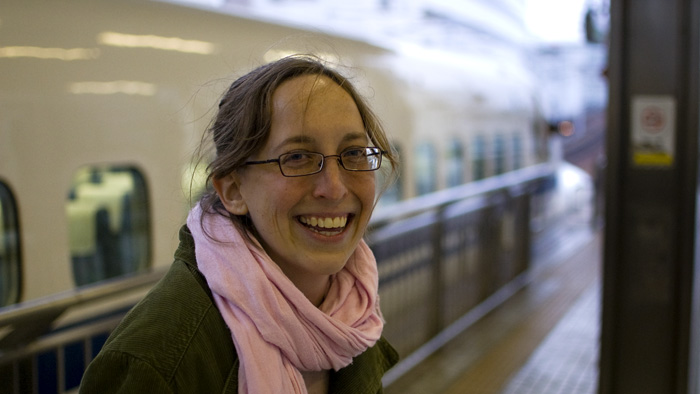
Abby's first shinkansen, Nagoya Station. The ride on the local express from Okazaki to Nagoya was bumpy and crowded, and her motion sickness kicked in pretty badly. At this point, I was coming down with a what would become a serious cold, although I didn't quite know it yet. On the ride over, huddled in the little connecting path between train cars, we must have looked like we had the black plague. So when we got to Nagoya, both of us were ready for the wide seats and smooth ride of the shinkansen.
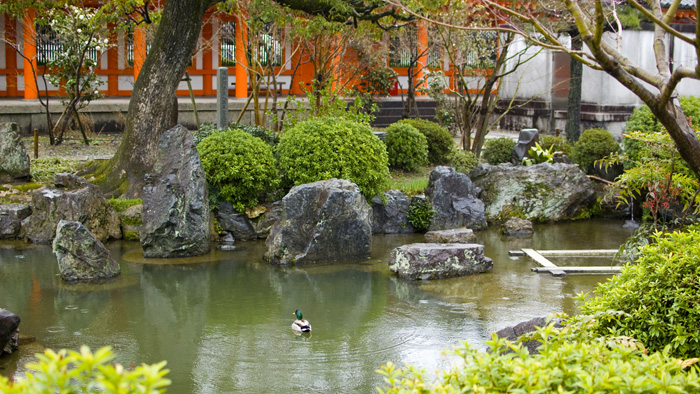
In Kyoto, we were greeted with rain, a cold, relentless drizzle that eventually turned into tsunami-class winds. The Sanjūsangen-dō was the first stop in my itinerary for the day, and the only one we ended up reaching. Pictured above is the garden, in a rare moment of respite from the rain. The inside, which I sadly could not photo, had one thousand life-sized Kannon statues. The effect was stunning.
Ahead of us, a Japanese man was endeavoring English explanations to a wholly disinterested American couple. We tagged along, just within earshot, listening to stories about the building's use for archery tournaments and as the probable site of one of Miyamoto Musashi's duels. Our unknowing tour guide's efforts were not in vain. Our favorite moment was when the American husband apathetically asked, "Why are there so many statues?" The Japanese guide paused in deep thought, then said, "Because more is better."
After having a ritzy Italian lunch inside a Hyatt (not very Japanese, but it was the closest refuge when the rain started back up), Abby searched through a guide book and found something indoors—the Kyoto International Manga Museum. Sadly, photography wasn't allowed there either, but I recommend the museum highly. Located in an old schoolhouse, the museum features several exhibits and three hundred thousand manga, of which fifty thousand are available for public viewing. Everywhere we went, people were reading. Not just a place for history, the museum felt current—alive.
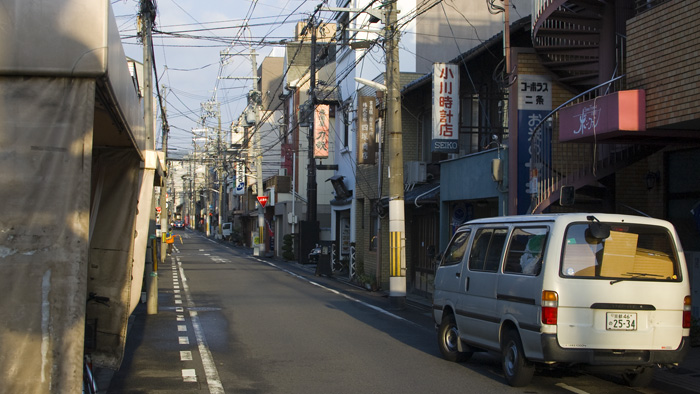
That put us through to the early evening, and the storm had moved on. I asked one of the receptionists at the museum if anything was going on at night, and she told me Nijō Castle was lit up for the sakura festival and was only a fifteen minute walk away. We took the back streets...

...where we discovered that Japan apparently doesn't have an OSHA...
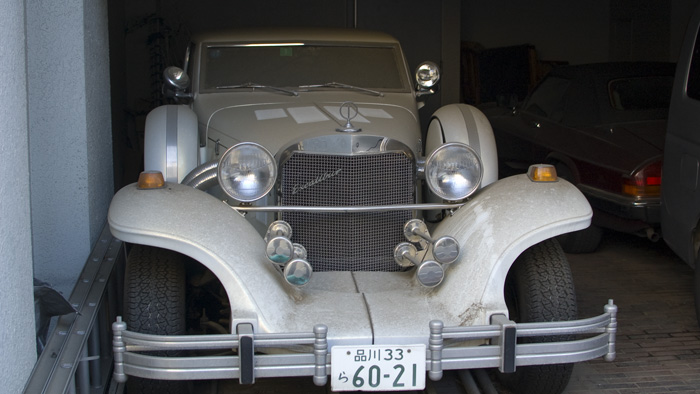
...but they do have some incredible classic cars...
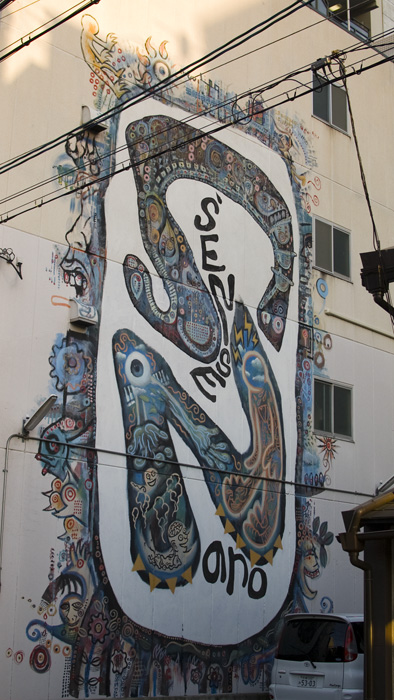
...and live music joints with fun murals...
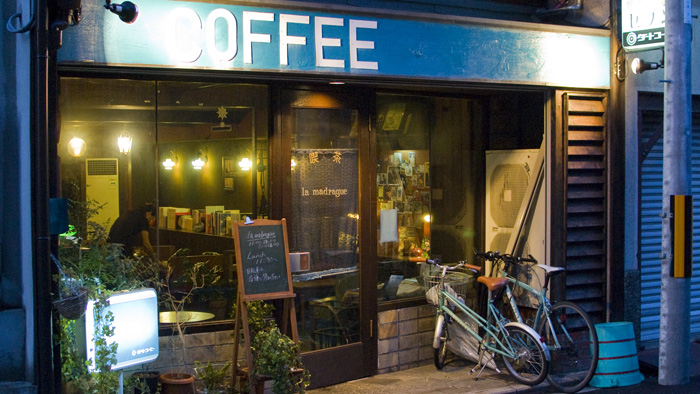
...and great cafes. This is from La Madrague, a coffee house named after the residence of Brigitte Bardot. I had milk tea and Abby had a spiced coffee. Both were absolutely top notch. Japan seems filled with little, wonderful establishments, often run by a single person or a couple for decades, where the character of the owners is allowed to show through.
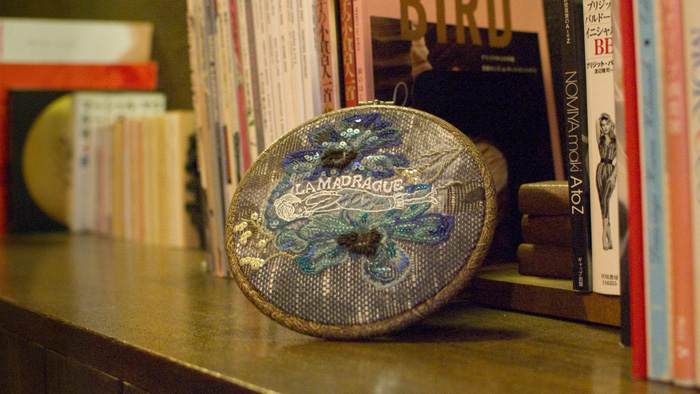
Embroidery in La Madrague.
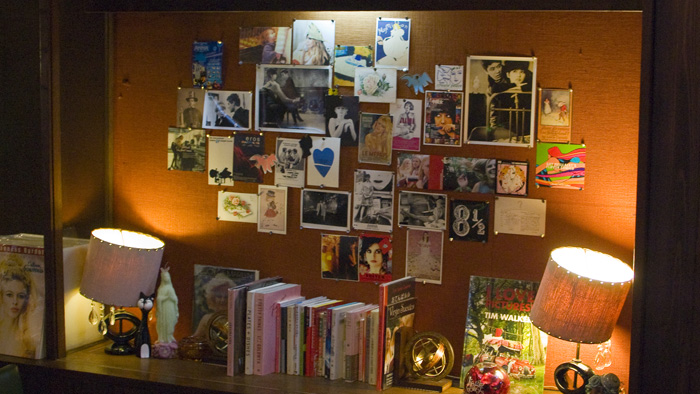
Postcard wall in La Madrague.
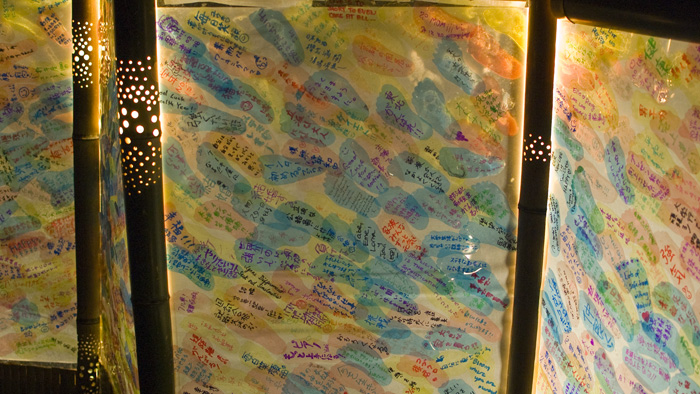
Art in Nijō Castle. At first I was a little worried, because the flowers were not yet ready, but the castle grounds were stocked with illuminated sculptures and art that made the trip well worthwhile. The castle moat was also lit up, painting shifting patterns on the castle walls.
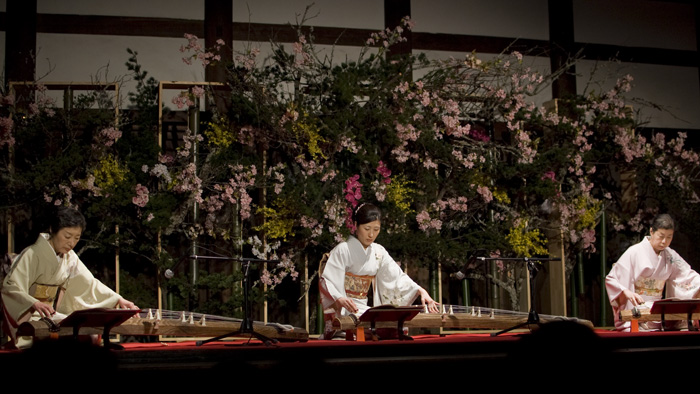
The rain returned, and we dashed down the garden paths to a large open doorway, where a koto performance was about to begin. None of this was planned or researched, just blind luck and a willingness to let the day take us wherever it led.
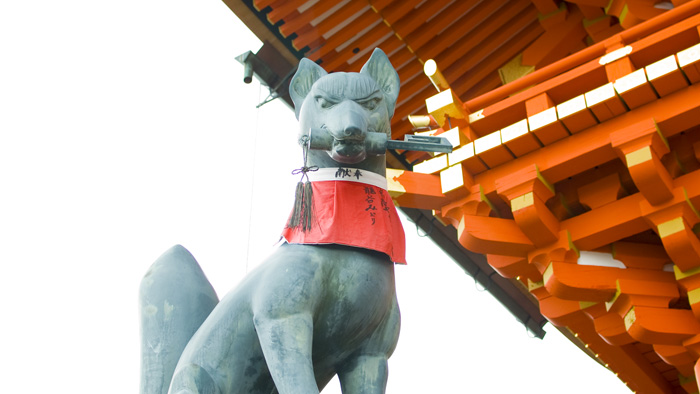
The next day was clear, and we ventured to the south side of the city toward a shrine, Fushimi Inari-Taisha, that both of us had wanted to see but hadn't fit into my plans. Now that the plans were toast, off we went. This is a guardian of the shrine, much like the koma-inu lion-dogs I talked about in an earlier post—but in Inari shrines, the guardians are foxes.
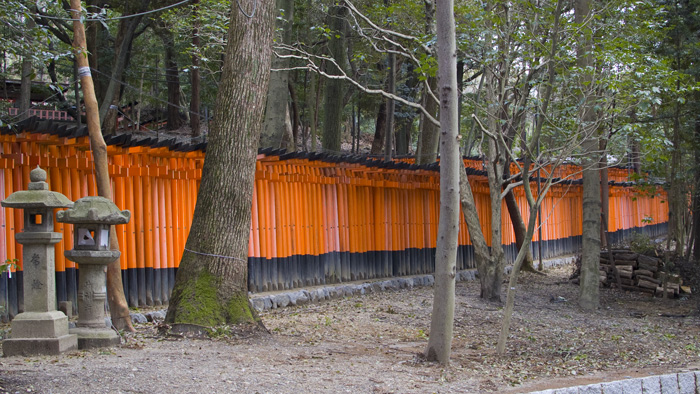
Fushimi Inari-Taisha is famous for its torii gates, with over five thousand of them leading through the forest and up the mountain to the inner shrine. Another example of the "more is better" school of thought.
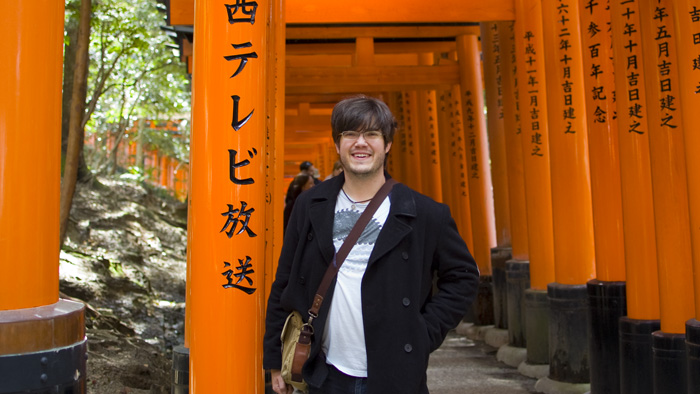
The gates are so tightly spaced as to seem a tunnel. Each torii is engraved with the name of a private or corporate sponsor. The bigger the torii, the larger the donation. The smaller ones are a couple thousand dollars or so, and these were probably tens of thousands of dollars or more.

Ema like this one are common sights at Japanese shrines. Typically, ema feature a picture on one side, often a horse or the current year's zodiac animal, and a handwritten prayer or wish on the other side. Here, as with the koma-inu, the Fushimi Inari Shrine is a little different, offering some ema with the picture side left largely blank, to be drawn on as well. Here's a sample:
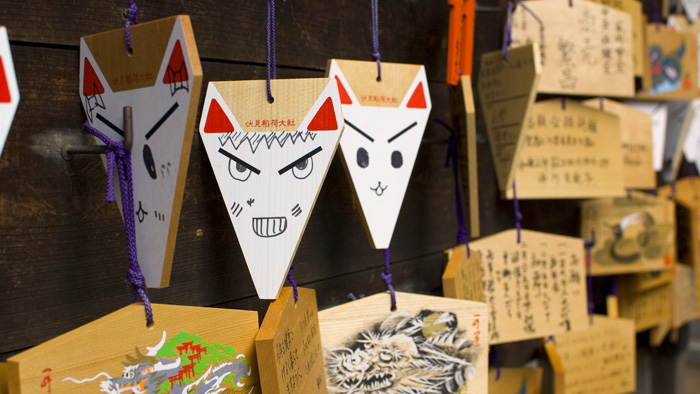
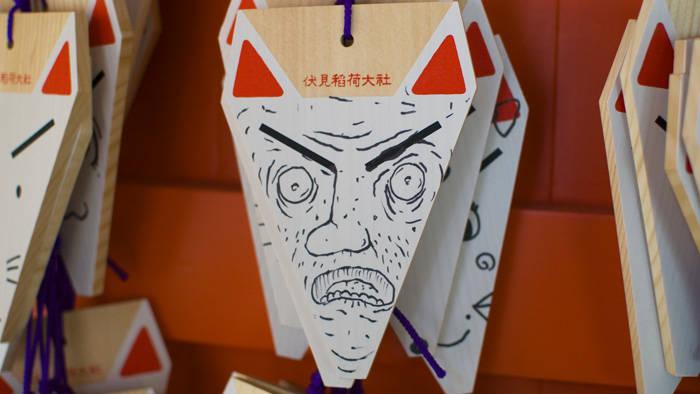
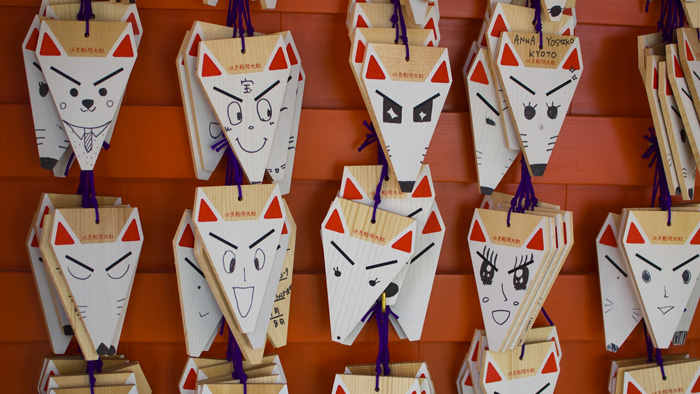
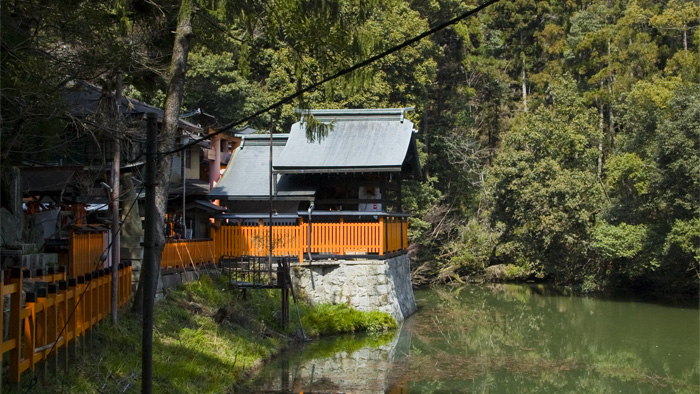
Fushimi Inari Taisha. The gods of this lake are said to be good at helping find lost persons, which is a little ironic, since we were lost when I took this picture.
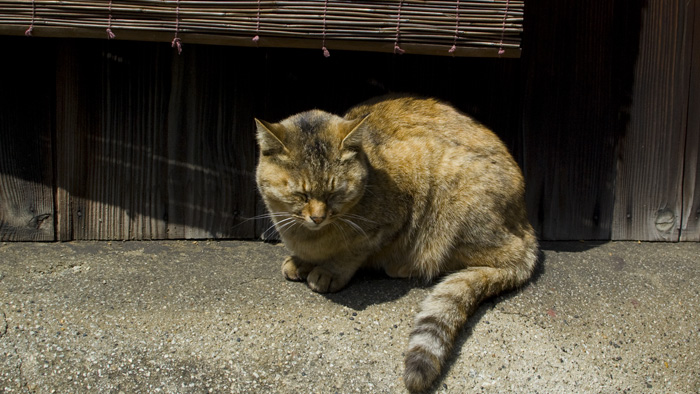
A cat outside Fushimi Inari Taisha. By this point, my cold was catching up to me, and we retreated to the hotel for a much needed nap.
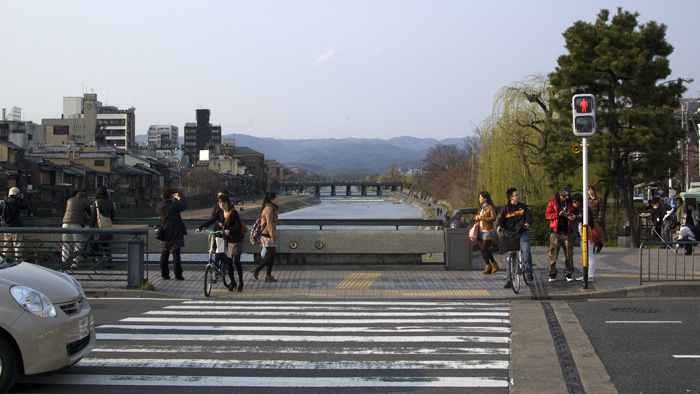
Kamo River, late afternoon. After a rest, we ventured back out on an important quest courtesy a bored Abby reading the hotel's in-room guide book: dinner at a train diorama restaurant.

Despite some difficulty thanks to Japan's lack of street names, we eventually made it to the Railway SL Club Degoichi, a restaurant/cafe/bar with a massive train diorama. Everything was train-themed, from the decor, to the way they spoke (our server announced our food's arrival as if it were a train). The dishes were more quirky than tasty—I got some new ideas for things to do with Japanese noodles, but Abby's curry had an unexpected tanginess to it that we won't be introducing to my cooking.
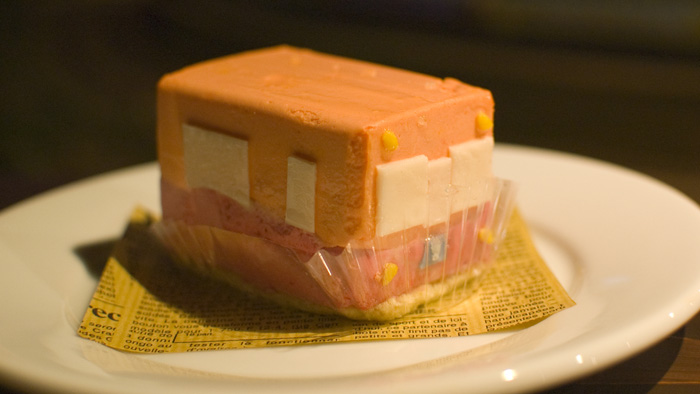
Even the desserts were trains, like this orange-framboise train-cake. Was it good? Kind of. But who cares? We ate a train for dessert. How cool is that!
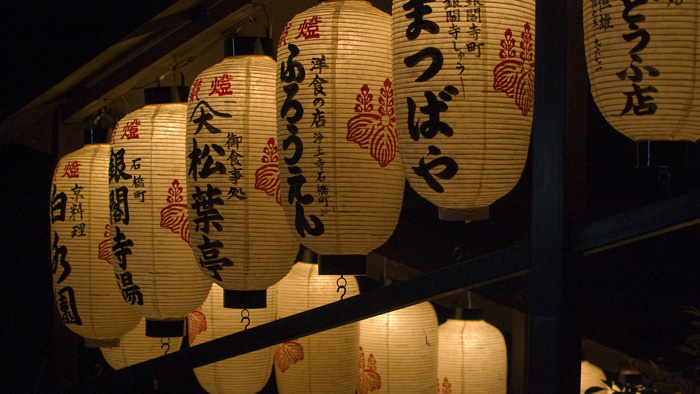
After dinner, we took a bus to the Philosopher's Road, one destination from my original plans that I stubbornly refused to abandon. The Philosopher's Road, a stone path alongside a quiet stream, is said to be one of the most beautiful places in Kyoto when the sakura are in bloom.
The sakura were not in bloom.
Still, we had a nice, quiet walk together in the dark. And when we reached the end, we saw some lights in the distance—paper lanterns, it turned out—beckoning us to a small temple. As we approached, a teenaged couple ducked out from the trees and made their huddled, fast-walking escape. I guess some things go beyond cultures.


